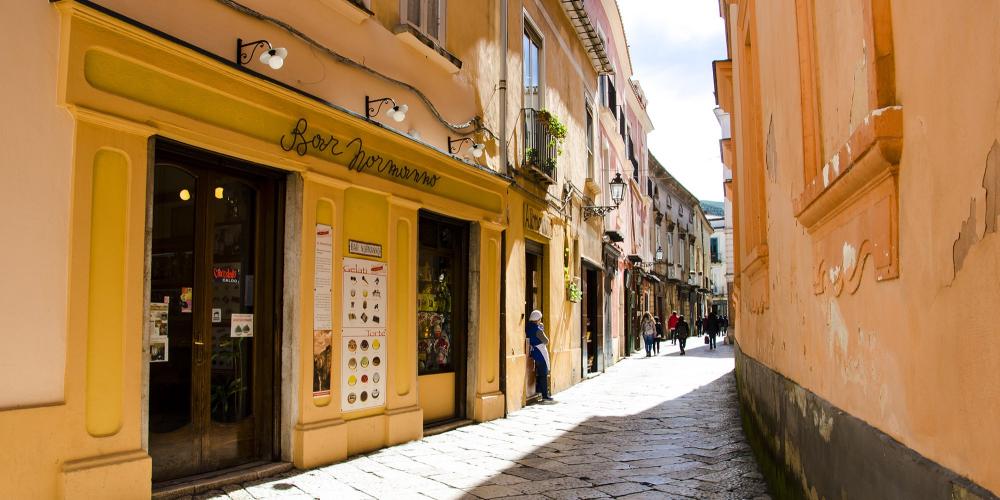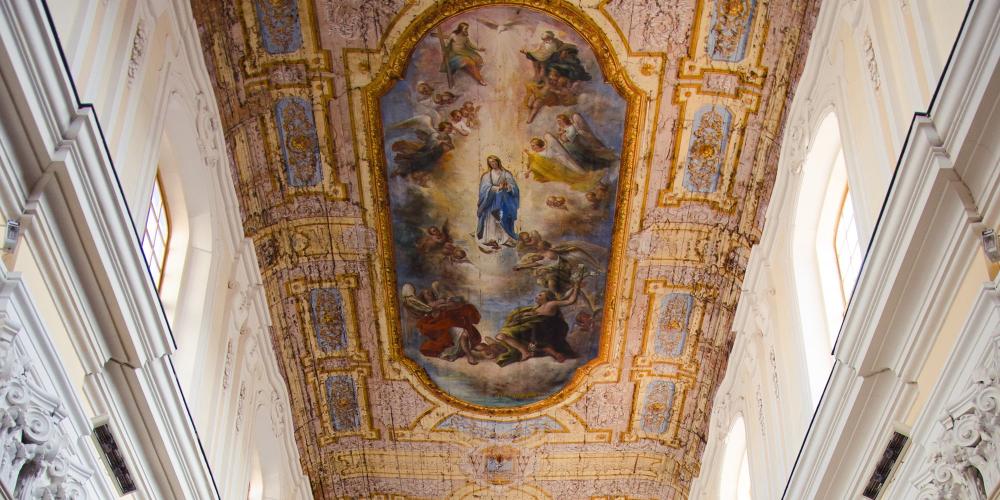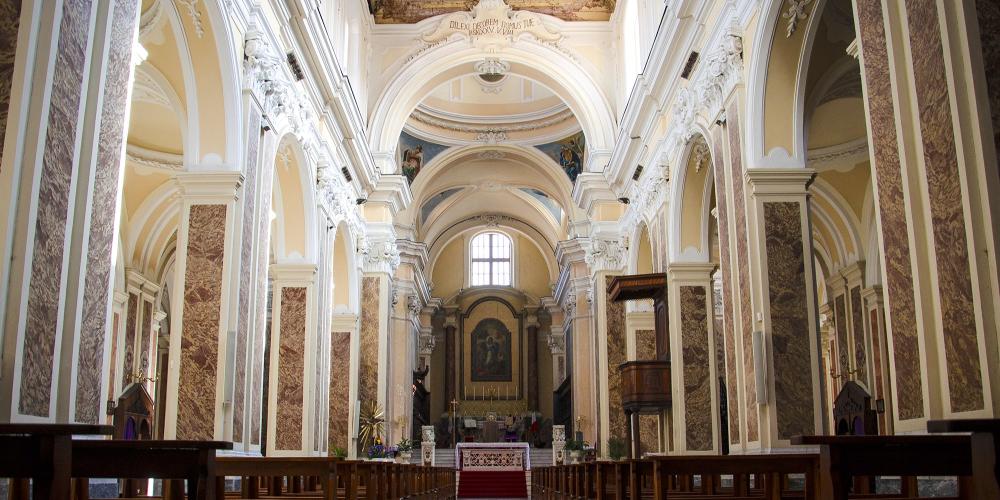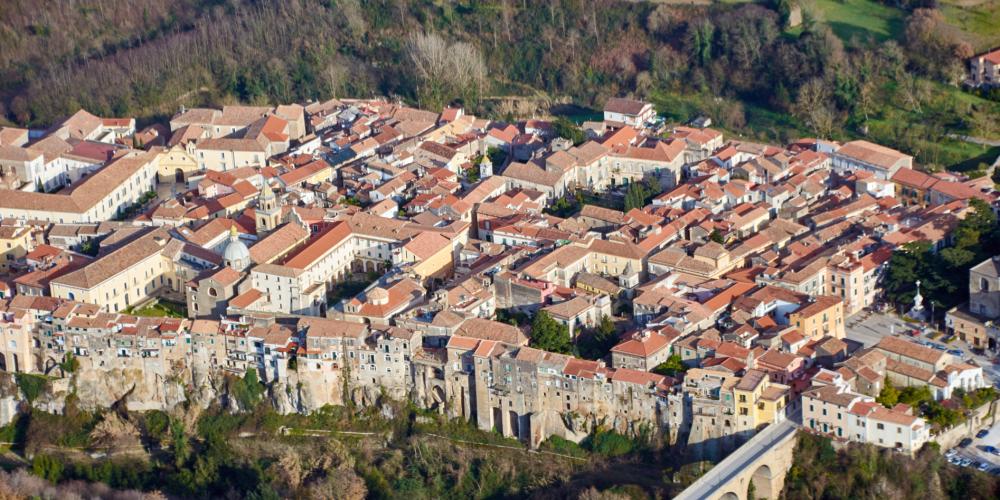Sant'Agata dei Goti

Here you can visit a pagan temple dedicated to the goddess Ceres or to all the gods, which was converted into a Christian temple between the 7th and the 8th century A.D. Renovated in 970, it became a cathedral, richly decorated by Bishop Adelardo. A century later, during Norman domination, it was completely rebuilt in Romanesque style. Then, in 1728 it was demolished and rebuilt in a Baroque style. It was re-opened to worship in 1741, and the eighteenth century structure remains unaltered.
Remarkable panoramic vistas can be enjoyed in many parts of the village. Its cool summer nights and abundance of local restaurants and pizzerias encourage locals and visitors to spend their Saturday nights in the borough streets and squares.
Because the surrounding area offers a wealth of local produce, this city offers great opportunities to sample local flavours, including the winter apple, a local specialty cultivated throughout Campania, and enjoy a white wine like Falanghina or a red wine like Aglianico, both with ancient histories in the region.
Main Attractions
- Cathedral (Duomo), founded in the 10th century, dedicated to the Assumption of Mary. Due to the repeated reconstruction, little remains of the original edifice. The Romanesque crypt shows parts which could belong to several pre-existing buildings, including Roman or earlier ones.
- Church of Santa Menna (10th century).
- Castle, used as Ducal Palace.
- Palace and church of St. Francis (1282).
- Gothic church of the Annunziata (13th century). It houses 15th-century frescoes, and a diptych of the Annunciation dating to the same age.
- The Council Room in City Hall was decorated in 1899 by Vincenzo Severino.
Sant'Agata dei Goti
Cathedral:
Every day 9:00 - 13:00; 15:30 - 18:00
Saint Menna Church:
Entry time: by reservation only
Free entry




